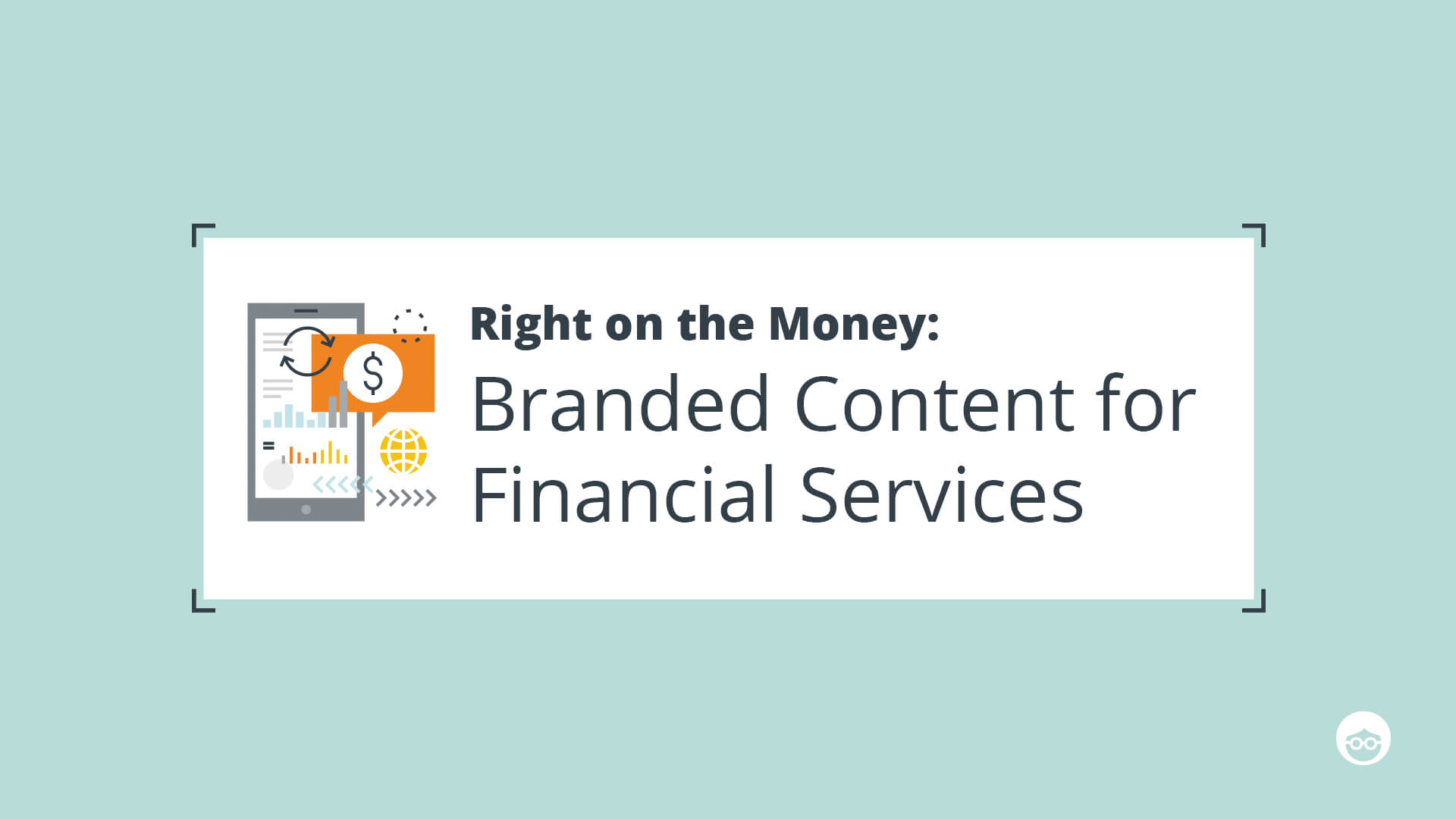Right on the Money: Branded Content for Financial Services

“Home insurance is so sexy”.
Said no one.
Ever.
Financial services is not a vertical immediately associated with highly innovative, content driven, online advertising. Auto and FMCG brands have a much richer history of storytelling, because their products tend to be perceived as more aspirational. However, some financial services brands are innovating in the way in which they interact with their existing and potential consumers, while handling the inherent challenges and restrictions their market presents.
Based on our experience in creating interactive branded content marketing campaigns for major financial brands, here are a few valuable insights for working with this unique sector:
Understand the Challenge
The banking and financial services sector presents a few special challenges for marketers, so be prepared to address the following points:
1. Conservative brand perception:
Financial services, perhaps more than any other vertical, is reliant on consumer trust. No one wants to take a risk with their finances, be it savings, insurance, pensions or credit cards. This specific point is potentially problematic for marketers wishing to reach new audiences with their financial products. Finance brands are torn between their need to engage consumers, managing regulation and their fear of damaging their reputation of trust.
When creating a campaign focusing on home insurance for UK financial institution, Halifax, we addressed the topic of property insurance in a way that encouraged engagement, but did not dismiss the importance of protecting your home. One of the branded items presented readers with a memory game, asking them to spot stolen items. The piece of content reached an average completion rate of over 80% and garnered an increase in brand interaction of over 70%, according to a study conducted by Nielsen.
2. Assumptions regarding the target audience:
Many brands still seem to think that transitioning to new formats and mediums is needed only when approaching a younger demographic. However, all audiences consume via new media channels to varying degrees. One way to address this misconception is by providing the brand data regarding less well served online age groups that are engaging with digital content, and explaining, for instance, that six in ten seniors go online, and users aged 34 – 54 consume 58% of their news on mobile.
3. Rules and regulations:
The financial services industry is heavily regulated (and rightfully so). This means that certain ideas (particularly around persuading a potential consumer to purchase) are off the table, which is actually an opportunity to be creative within such constraints.
And still, you must do your homework and get familiar with the Securities and Exchange Commission (SEC), the UK’s Financial Services Authority (FSA), or similar rules relating to marketing financial products to consumers. If you can demonstrate this understanding to your client, they’ll feel a lot more comfortable that they are in safe hands before running a campaign.
Let the numbers do the talking
One thing I love about our business is the ability to back creativity with data. Instead of theorizing that a client’s audience may respond to interactive content, we show them the reaction in real time. Impressive organic share and completion rates, along with dwell times which exceed industry standards are strong indicators of success.
Using data to demonstrate how an audience is responding is a good technique to move conservative brands out of their comfort zone. We ask brands to have faith in our ability to drive engagement, but we don’t expect them to do so unless we can demonstrate, using data, their consumers’ positive response, such as an increase in brand awareness or likelihood to recommend their brand to others.
Be transparent
Every brand should know by now that you cannot dupe a reader into consuming commercial content which isn’t appropriately marked as such. This issue is particularly acute in heavily regulated industries, where the brand cannot be seen providing financial advice. It is therefore best to accentuate the brand’s involvement in the content and be confident that you are adding value to the consumer.
As far as labeling is concerned, financial brands should comply with industry regulations issued by institutes such as the SEC, FSA and the FTC. But there are also commercial reasons for brands to inform readers regarding the nature of the content they are about to consume. Recent studies actually show that clear labeling has a positive influence on brand perception among branded content target consumers, and if you’re worried that readers will be put off by the notion of branded content, keep in mind that young readers care more about the quality of the content than its agenda.
Remain agnostic
The challenge many brands are facing with branded content is finding the right publisher to match their content’s tone of voice and target audience. We believe in partnering with publishers whose audiences align with the brand’s tone of voice, which allows us to solve one of the aforementioned challenges regarding the somewhat conservative approach by many consumer facing financial brands.
Despite the regulated nature of their industry increasing nervousness around engaging content, financial service brands present a unique opportunity for publishers and content creators. Interestingly enough, these constraints increase innovation, creativity and leadership, and form the base for branded content campaigns which can lead to legitimate creative innovation.




![[Event Recap] 3 Highlights from Outbrain’s 2021 Unveil](https://www.outbrain.com/blog/wp-content/uploads/2021/01/OB-Blog-Post-Regular-Thumbnail-Unveil-Recap.jpg)









